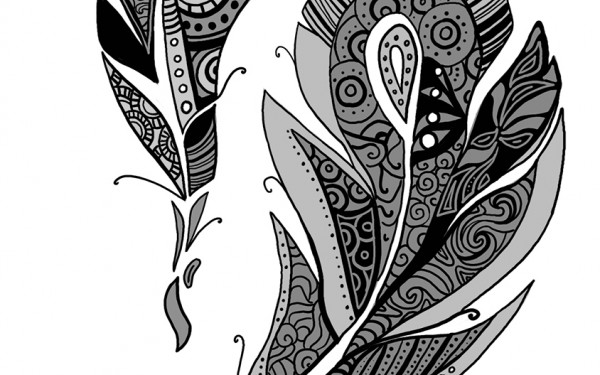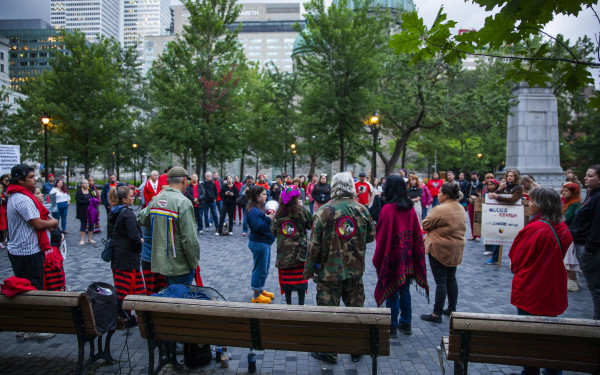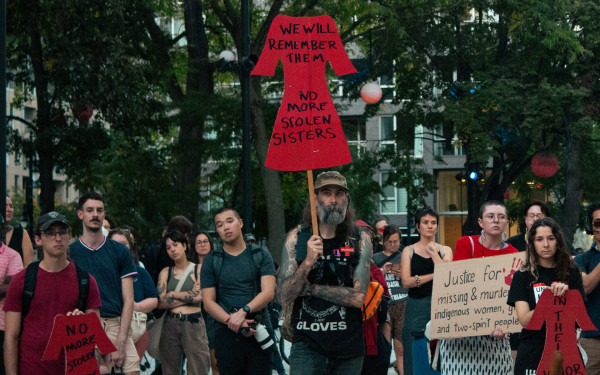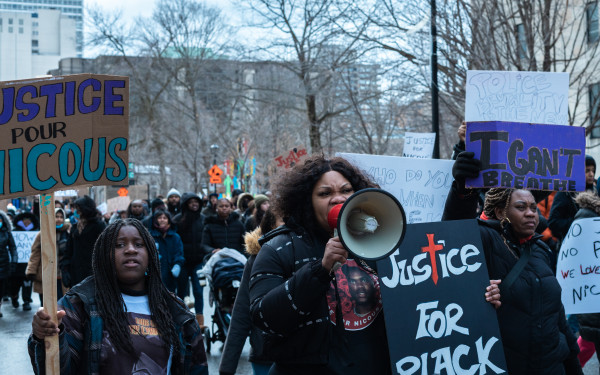Canada’s disregard for Indigenous grief
How Canadian healthcare dismisses Indigenous cultural approaches to well-being
In the face of grief, the pursuit of closure and dignity for loved ones is a process one may seek to attain. For Indigenous communities in Canada, however, it's a privilege they have often been denied.
Within the heart of these communities, a network of healing and unity continues to flourish, going beyond what the Canadian government can provide.
The shortcomings in the justice system, as highlighted at the MMIWG2S+ vigil in Montreal on Oct. 4, serve as a reminder of the injustices endured by Indigenous communities, both physically and emotionally.
The healthcare system falls short of effectively tending to these issues.
Among the 94 specific Calls to Action established by the federal government in 2015 following the 2013 Truth and Reconciliation Commission, not one of the seven healthcare-related recommendations for Indigenous communities has been implemented to date.
This includes recognizing the unique health requirements of Indigenous communities, as specified in Call 20. The call to action encompasses the prevalent health concerns that differ between communities such as the higher rates of tuberculosis or mental health issues. It also involves incorporating their healing practices in their treatments, as outlined in Call 22.
A recurring theme among Indigenous families seeking help is the persistent experience of racism, discrimination or neglect when dealing with authorities. Those who muster the courage to reach out to health or judicial services often receive blame for the situation they are in.
Joyce Echaquan's death is an example of the persistent struggle of systemic racism within the healthcare system. Even after her passing, caused by an excess of fluids in her lungs, speculation of drug withdrawal continued to be used as an excuse rather than addressing the neglectful and racist treatment she received from healthcare professionals.
Cambria Harris, an Ojibwa activist and member of Long Plain First Nation, lost her mother to a homicide in 2022. Her mother’s remains have yet to be found, as the police decided to halt their search of the Manitoba landfill where her remains are believed to be buried. Harris said there have not been any services provided by the government for the mental toll this has had on her family. She continues to demand the action of authorities.
"Those [cases of neglect and discrimination] are the conditions where it makes it really hard for people to heal or have closure because there's no justice and no social justice," said Dr. Catherine Kineweskwêw Richardson, a Métis scholar of Cree and Gwich’in descent and co-founder of the Centre for Response-Based Practice—a centre that aims to promote effective responses to violence for Indigenous communities through counselling, education, research and advocacy.
These systemic issues become even more concerning when examining the suicide rates for Indigenous youth. They are ten times higher for males and 22 times higher for females than non-Indigenous youth. “No one questions why those statistics are not changing, and that’s because of the government before us; they’re not putting their resources at the right places,” Harris said.
Health programs which already exist, such as the Non-Insured Health Benefits—a program that provides coverage of health benefits for Indigenous communities—tend to be challenging to access due to the rigorous paperwork and requirements, further alienating those in need.
In a flawed justice system, where healthcare systems are facing their own challenges, Indigenous communities struggle to seek recourse, which can create a pervasive sense of deficiency.
Delta Jacobs, a Kanien’kehà:ka artist, said when she navigated the healthcare system, she felt unrepresented, emphasizing that she discovered comfort in art therapy as opposed to the more conventional client-centred therapy suggested by Western practices.
“The way they (most Western therapists) approach things seems so monotonous, medical and sterile for me,” Jacobs said.
Less than one percent of Canada’s physicians identify as Indigenous.
"Psychology is one of the arms of colonization," Richardson said. She explained that individual-based therapy and diagnoses can oversimplify situations and people, failing to address the broader social injustices that affect communities.
Richardson also highlighted the issue of using psychiatric language from Western culture against Indigenous people. She said an example of this is the recurring issue of removing children from their parents based on perceived mental health diagnoses.
“They come onto the reserves and pull families apart, which is just a way to break the community because they know that’s our strength,” Jacobs said.
The solution social workers gave Jacobs’ three siblings was to take them to group homes at a young age for supervision.
Survival has meant that we have to keep going, and muster a certain strength—and one of the ways we did that was by not buying into individualism — Dr. Catherine Kineweskwêw Richardson
While Harris was pregnant with her daughter, she said she was asked to undergo a psychological evaluation to assess if she was fit to be a mother.
“That in itself was stripping me away from my rights and telling me that I was going to fail. And that’s what Indigenous people get told all their lives; is that they have these statistics over their heads and that is all they will ever be,” Harris said.
She said she most struggled with mental health during her teen years. Struggling with suicidal ideation, she was often placed in crisis centres as a result. “They deemed me a high risk to society because I was running away from what they were throwing at me: homelessness and not having anywhere to call my own.”
While mental health is a deeply personal experience, it is crucial to acknowledge that communities still bear their own narratives, healing methods and distinct ways of dealing with challenges that remain suppressed within Canada’s systems.
Jacobs said that this is the same with grief and loss. “Funerals where you wear black and cry and meet strangers—that is a Western thing.”
Jacobs recounted an instance in 2018 when her grandmother passed away, noting that her loved one remained surrounded by family and continued to share laughter until her final moments.
“We deal with loss in a very communal way, because you’re not just losing a person, you’re losing a mother, an aunt, a friend. Everyone is connected to this person in so many ways,” Jacobs said.
Harris has been grieving her mother through ceremonies, one of them being a spirit plate, which she said is a way to connect with your loved ones by setting out a plate of food. “You just have a conversation with whoever you’re trying to reach, it’s like a portal between this world and the nonliving world,” she said.
Richardson, who is currently partaking in grief workshops for Indigenous communities in British Columbia, explained that grieving is embedded in culture and is unique to communities.
“Our ceremonies offer the opportunity to sit in a circle, to cry, to be witnessed and held up by other people; also invoking our creators, our ancestors and other spiritual support,” Richardson said. “Colonial violence has always been about destroying relationships and connections that are sacred for our well-being. Survival has meant that we have to keep going, and muster a certain strength—and one of the ways we did that was by not buying into individualism.”
Amid the relentless fight for transparency and justice for MMIWG2S+, another conversation remains relevant: the persistent failure of Western discourse and healthcare systems to adequately support Indigenous people in a myriad of ways.
“I am not necessarily [demanding action from the government] for closure, but to have my mom respected as a human being because she deserves dignity in death that she was not able to receive in the living world,” Harris said.
This article originally appeared in Volume 44, Issue 5, published October 31, 2023.

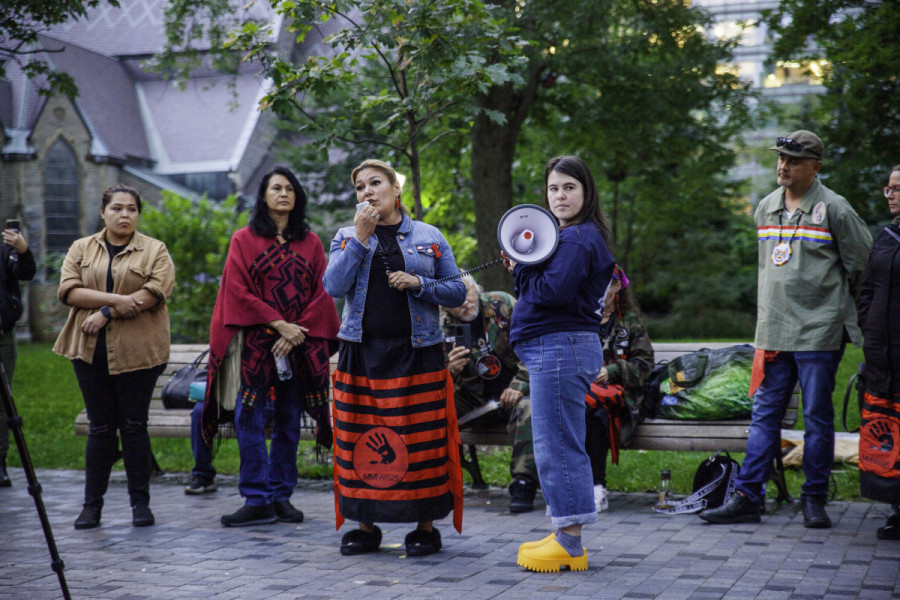
_600_832_s.png)

